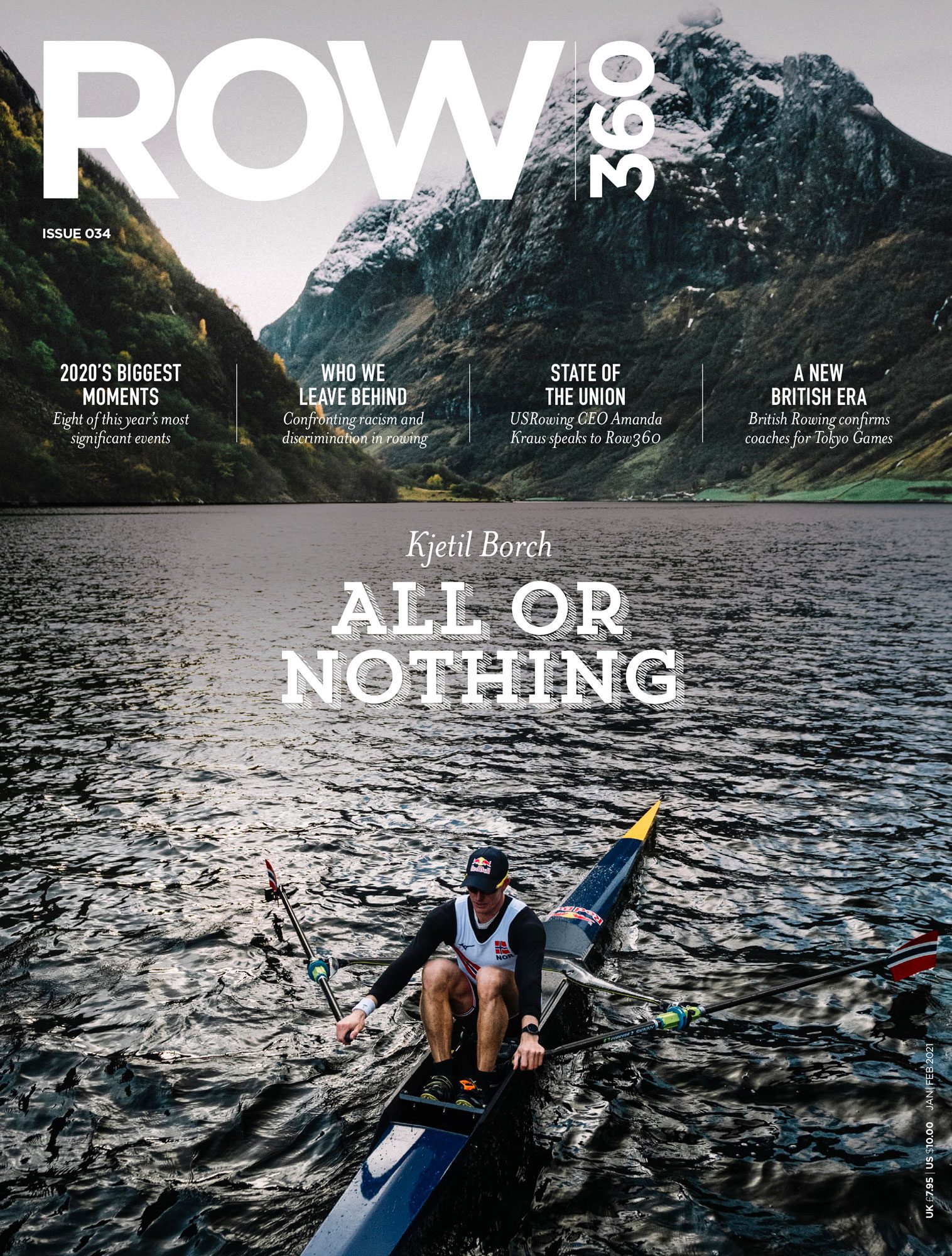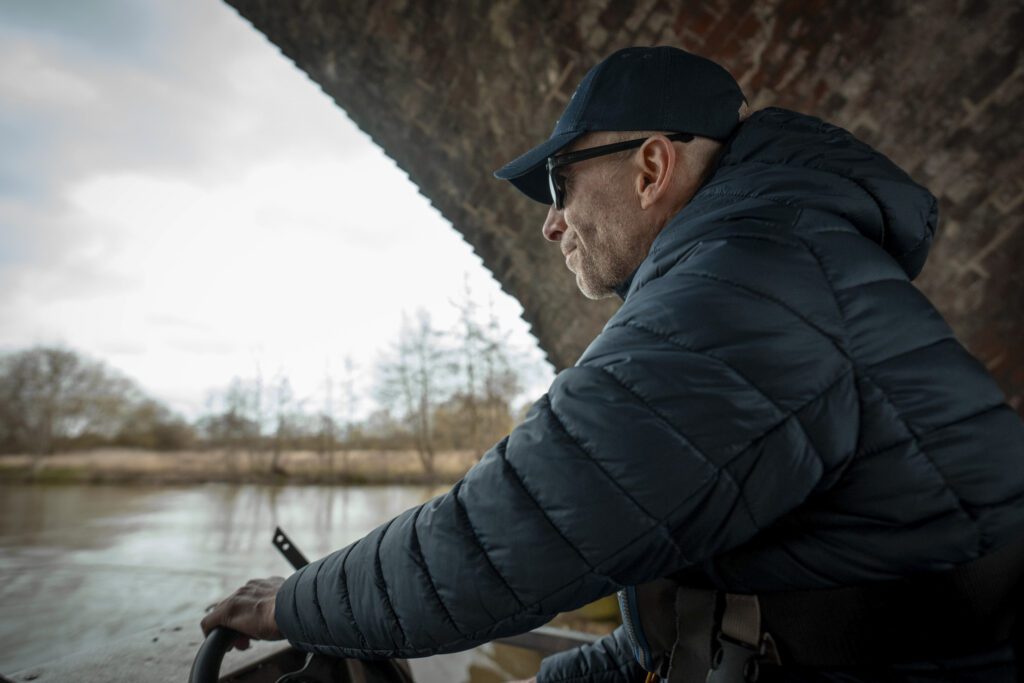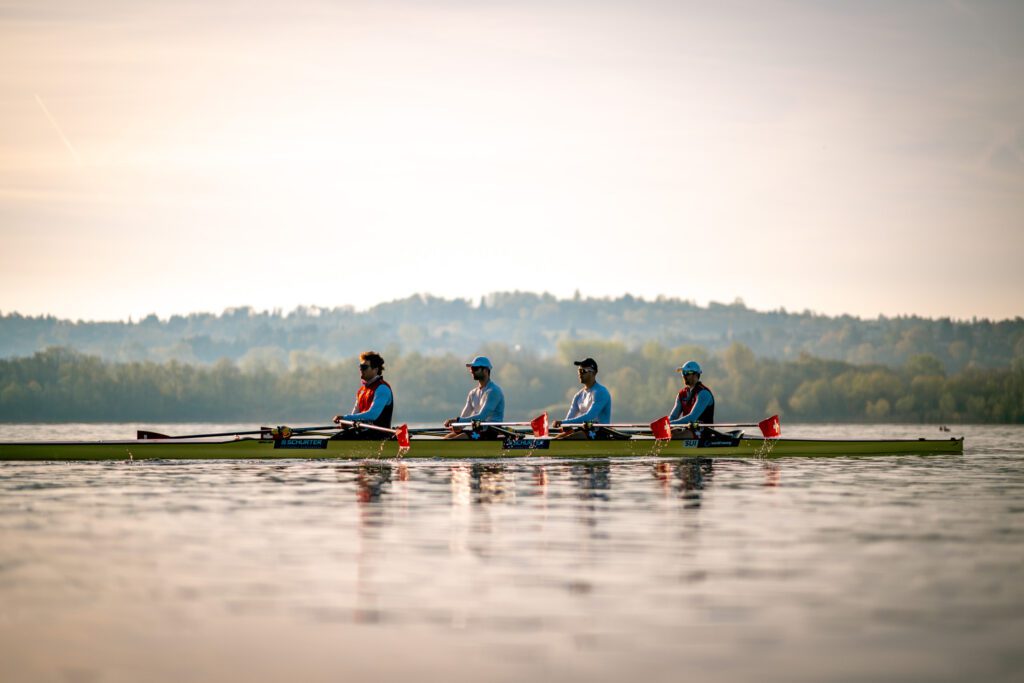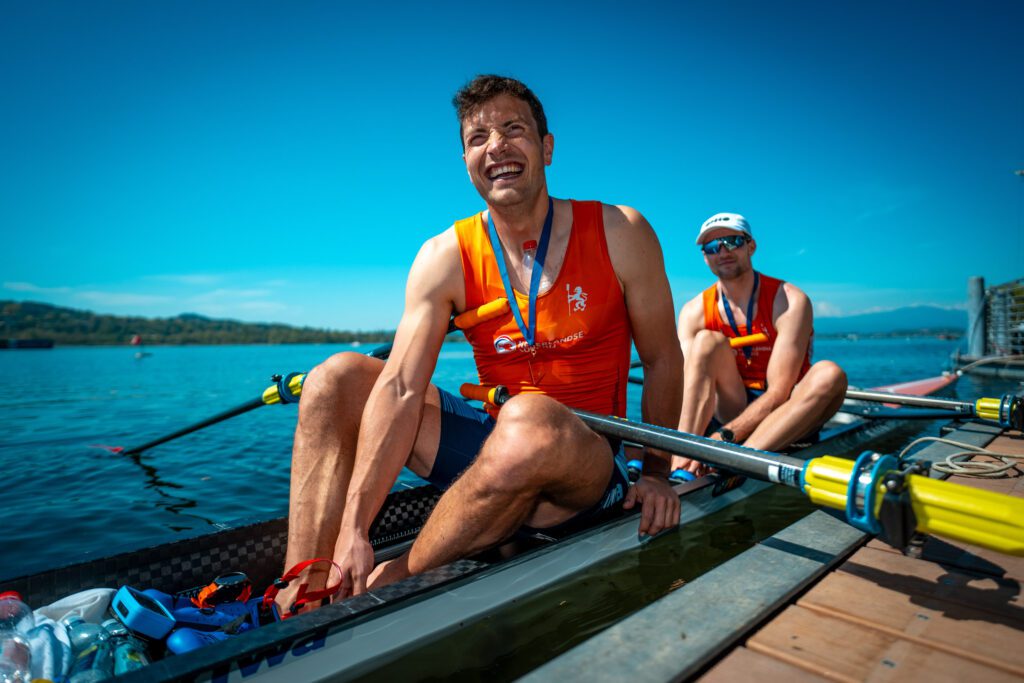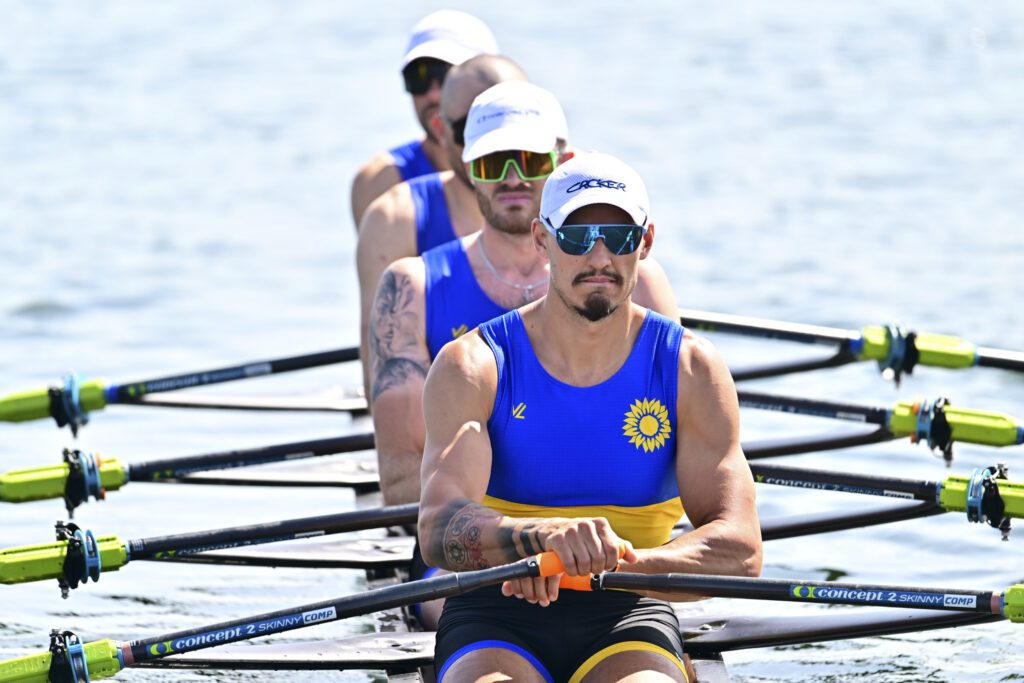Late in November, at the end of her first month as CEO of USRowing, Amanda Kraus spoke to Row360 about her new role. In this candid interview Kraus explains her vision for the sport, where she hopes to have the biggest impact, and just a few of the challenges she has faced so far.
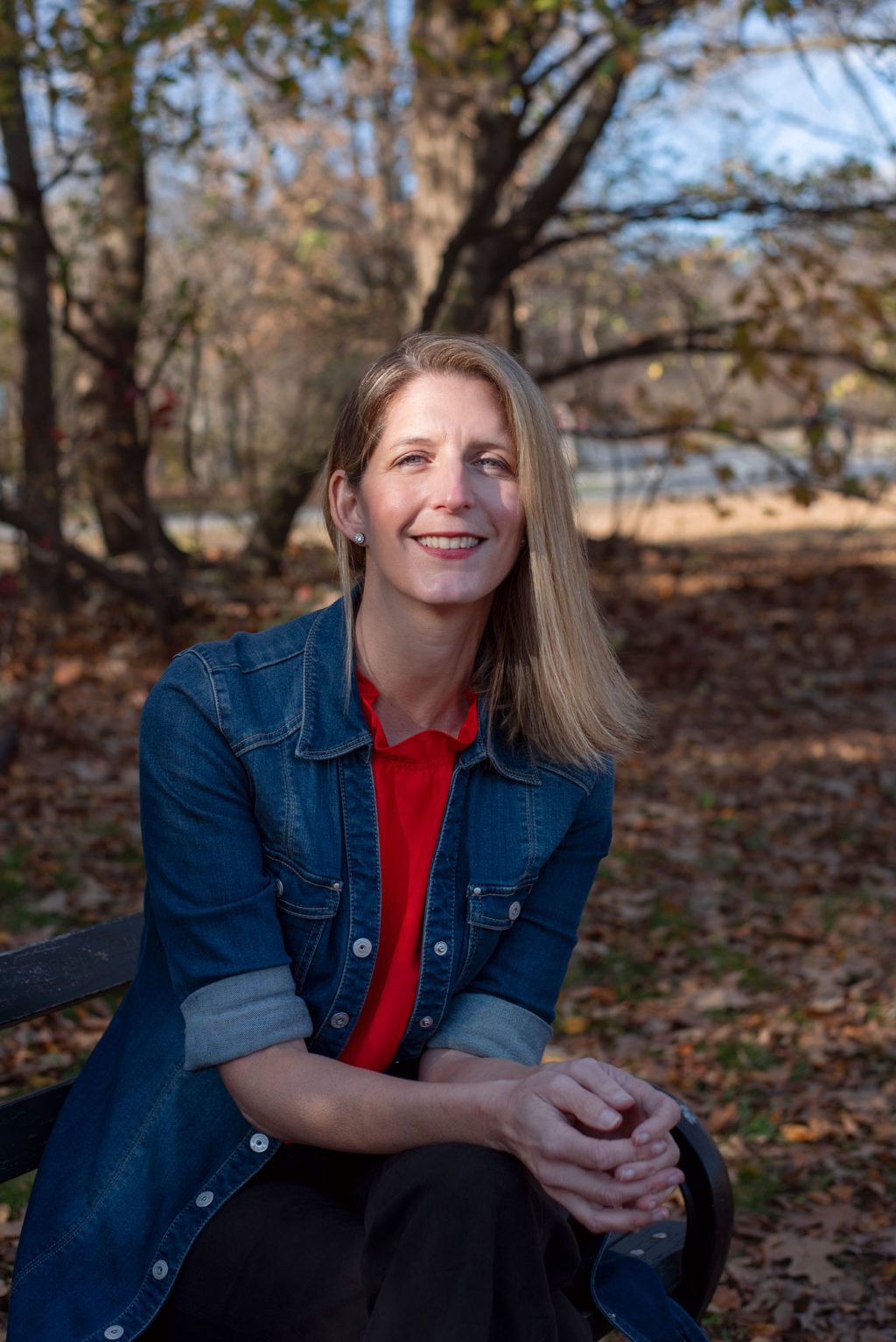
You’re one month into the job, how has it been?
It’s been busy. They call it drinking from the proverbial fire hose. There’s a really nice community of national governing body CEOs who are in touch with one another and a lot of them reached out and said “welcome” and “I’m here to help”. All sorts of sports; squash, synchronised swimming etc. It’s been fun hearing from them all. They all said, “I am sure you are drinking from the fire hose” and it’s really the best way to describe it. Just taking in all of this information, while at the same time there is an organisation to run. You don’t have the luxury of saying “Ok I’m just going to take this all in”. So busy, but fun and super interesting.
Is it what you expected?
I think it is what I expected. I knew there would be an enormous amount of work to do. I expected it to be a lot of learning and a lot of peeling away at the layers. I was talking to someone here after my first week, which was definitely harder than it is now – I am up to my fourth week now – and I said “it’s been hard,” he said “well, it’s self-inflicted”. So yes, I think it’s what I expected.
You have had to do much of the job remotely so far?
Ninety nine percent of it has been done remotely. I had one chance to go out on the water with Tom Terhaar and the women’s team in Princeton. It was amazing to spend the morning with them.
I think there is mostly cons to being remote, as everyone knows. Especially when you are new and the staff are new to you, and there is only so much you can do on Zoom. Yesterday we had a 4-hour finance meeting on Zoom, and it makes it that bit more gruelling. I am sure there are psychologists having a field day about why this is so hard for us humans, and I have read about it a little bit, about why these screens are exhausting for us, but it definitely adds an element of making it more difficult. The silver lining is that you can close the screen and turn it off for a couple hours and just do the work and no one can interrupt you. It saves on commute time too. So, it’s been all the same pros and cons that most people have experienced in the times of Covid, but mostly cons. Especially when everyone is new. You don’t have relationships that then went virtual; you are starting all your relationships with your staff virtually.
So where are you based?
I’m in Brooklyn in New York. USRowing’s offices are in Princeton but we are closing those. Mostly because the lease is ending, and we haven’t used them since March. We are going to take some time to stay remote and then re-assess where everybody is.
You previously founded and ran for 18 years the non-profit organisation Row New York. How did you come to do that?
I started Row New York after graduate school because I felt like rowing was very limited to mostly people coming from backgrounds of privilege in the United States – very white and affluent. I had worked for a program in Boston called Girls Row Boston out of Community Rowing and I just thought “this is incredible”. I had first-hand experience of recruiting girls and coaching them on the Charles River, seeing what rowing did for them and how much it changed their lives. I thought “this is the best thing I have ever seen happen,” and, to cut a very long story short, I decided to recreate that in New York City. It was definitely easier said than done because we didn’t have any infrastructure; Columbia rows here but they didn’t have the resources to support a youth program just launching. I had just finished graduate school and was very young at the time. It’s amazing looking back how much education you can have and still not know how to do much. But I figured it out as I went along. I learned how to build a board, fundraise, run a program, fix a skeg, coach, do the accounting for a non-profit; all of those things at once. I don’t think I did all of those things well, but I knew enough about all of them to do some of them well and for the others I got good at finding other people who can do them well. And so, it grew from there. It was definitely a good experience to have gone through now that I am going through this experience. My husband, who was with me through the whole period of founding Row New York, said to me recently that it really feels like I’m back 20 years ago, which is interesting because I am not founding USRowing, but it has a similar feel.
“I had a part-time coaching job with Girls Row Boston and I found that I was so much more inspired by what was happening there than what was happening on campus at Harvard”
Amanda Kraus
Did you always plan to launch a non-profit after graduate school?
I went to Harvard for technology and education, so I was really going in a very different direction. I was getting into children’s television and educational software. At the same time I had that part-time coaching job with Girls Row Boston and I found that I was so much more inspired by what was happening there than what was happening on campus at Harvard. That was just me, that just spoke to me so much more. So, it wasn’t planned but it became apparent that it was the natural direction to go in.
Did you see it employing you for the next 20 years and growing to the size it has?
No. No way. In the beginning it was just girls in New York City and I thought ok I’ll just put the blinders on, and I will create this and then we will see where it goes. It’s a testament I think to how many incredible, generous people there are here in New York City, most of them rowers, who got behind the effort to build Row New York and either put money or time or both into it. But no way, if you had said to me in 2002 that this is going to become a five million dollar organisation and it will be building a boathouse and doing all of these things I would have said that’s crazy.
What do you attribute its success to?
It’s a hard model to argue with. It’s hard not to get behind what we stand for and what we provide which is taking rowing and using it as a vehicle to build strength and to build teamwork and to give young people access to the sport that teaches all the lessons that we all as rowers know about and appreciate. To make that available to kids who otherwise wouldn’t be rowing, it’s hard not to get people behind that. And if you have clear vision of what you want to do and you can convey that to people and get your champions or allies, there is little you cannot do. I grew up with a mom who was always saying “put the blinders on” and “keep moving forward”. I think being a rower helps with that too. You are good at being uncomfortable, you are good at saying yeah this is hard, but you just keep going. And those early days were so hard because not only did I not know what I was doing, we had no money. There was no infrastructure, no support.
Is there any one thing that you are most proud of achieving with Row New York?
That’s a good question. Mostly I’m just proud that we created an opportunity for these incredible young people whose lives I know were changed because they were rowers. I don’t like to say I am proud of that – I feel very lucky that I had a hand in it. A more concrete thing that I am proud of was that we won the New York Nonprofit Excellence Awards in 2014. The award is given to organisations in the New York City area that show good leadership and organisational strength across multiple areas. So, it wasn’t just ‘you run a great rowing team’, it was, ‘you run a good organisation’. It highlighted the non-sexy stuff like your finances are in order and you have good governance, and you have good practices and policies around social media etc. That was a big lift for us as an organisation, and it was really a great honour to be one of the three winners that year.
Will you continue to have any involvement?
Yes, I am still on the board. We are building a Norman Foster designed boathouse which we are $25 million into fundraising for. So I am still involved with that project, but at the same time it’s good for me to step back a little bit and give the new leadership there the space to own it and move it forward.
What made you want to switch paths and take the USRowing job?
I think the real answer is that I didn’t create Row New York for me to run it for the rest of my life. I created Row New York because I wanted it to exist. And I learned a lot in those 18 years and felt so privileged to be able to play that role in running it – but it’s good now, it’s grown up. It’s kind of funny that it’s turned 18. It’s like when the kids head off to college, and that’s sort of what it felt like. I’ve done what I can and now it’s time to send them off. Maybe then I should have just retired or something, but I’m probably too young to do that and I needed a job. When the USRowing job opened up again, and a couple of board members reached out to me, I thought, that sounds insane. But I also kind of like that. I like puzzles, and I like difficult things. There certainly are moments where I’m like, “Oh, my God, this is insane”, but that is what I signed up for. I like trying to solve things and make things better. I am not saying that I’m going to be able to fix everything. But I’m really up for the challenge. And I feel like there’s so many good people in this country. Good, smart people, and there’s so much goodwill. If I can figure out where all the pieces go, then we might be able to do amazing things for the sport. I think all the ingredients are there. We just need a good chef. I know people love this sport. And I know there’s so much good energy out there. We just need more resources.
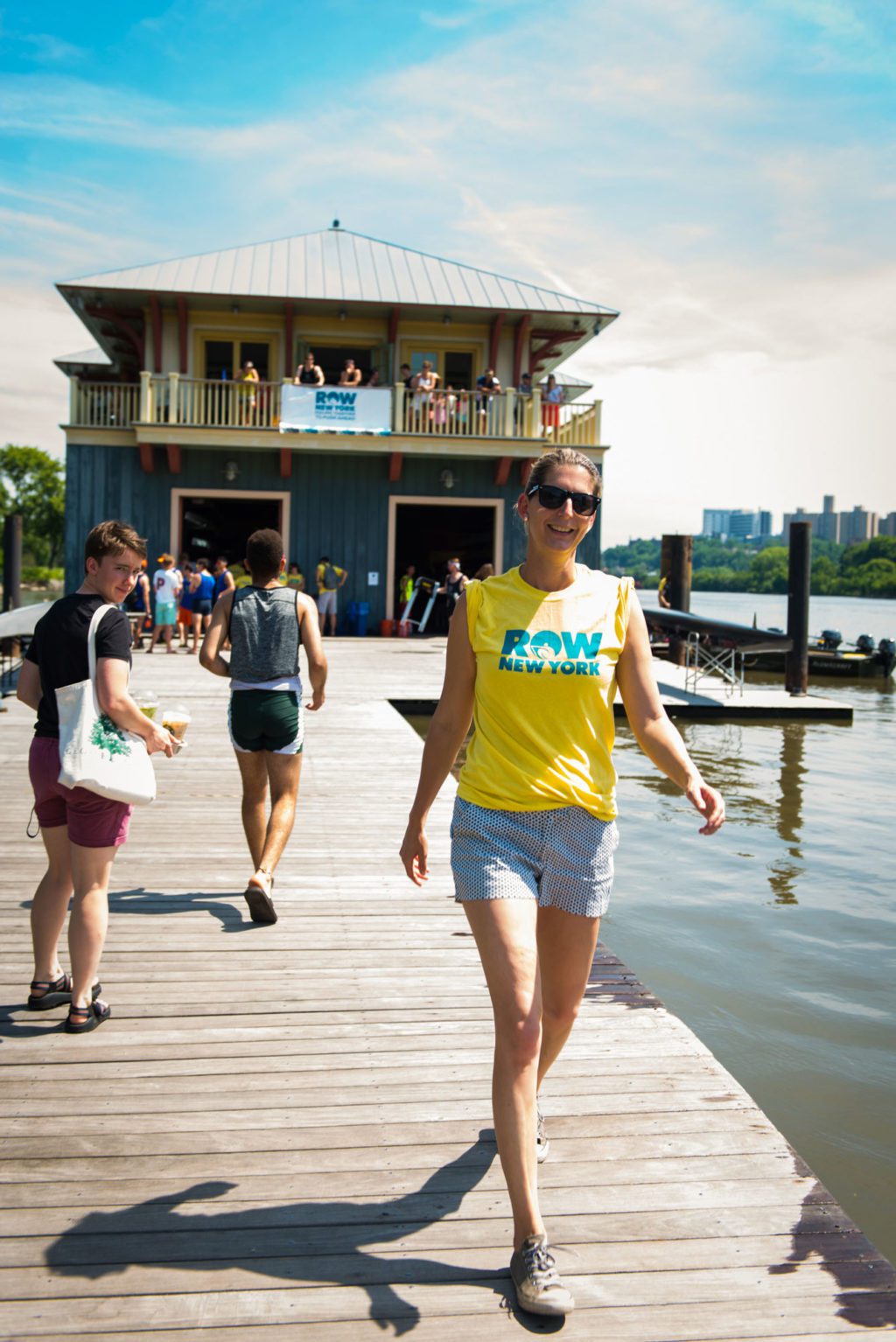
Photo Kraus at Row New York
What is your approach to fundraising at USRowing going to be? Do you have a tried and tested formula?
Some ground rules in fundraising are always the same and some best practices are always the same. I know it’s a cliche, but it’s really about relationship building. People will give money to something because they believe in the leadership behind it, or they believe in the work. Or both. Ideally both. With USRowing I want people to believe in my leadership and trust that I can steer this ship well. And then independent of my leadership, I want people to feel good about where their money will go. So, we’re working really hard now on identifying those initiatives, so if we’re a $10 million organization, and somebody gives us $1,000 or $10,000 or $10, they know where that money is going. Nobody wants to feel like they’re just feeding the machine.
And so, I think it’s our responsibility as good stewards to say, “Okay, these are the initiatives we’re focused on. We’re homing in on that”, but we’re not yet ready to present that. There are three things that we’ll be talking about.
Firstly, coaching education. What we’re hearing from the membership is that people want to get help on that front. People want better coaches, people want to become better coaches, people want to be coached by better coaches. That’s the feedback we’ve gotten. So how can we be a better resource to coaches in this country, which is something I love to think about, and we have some great staff with incredible ideas on that front. And from adaptive coaching to national team level coaching too. How do you teach a middle schooler how to row? How do you teach a 50-year-old woman how to row?
The second initiative is diversity, equity and inclusion in rowing. We want to hire someone full-time to lead the outreach around the country. Helping clubs and boathouses, whether it’s a college boathouse, or a club in a city or elsewhere that wants to make their boathouse more diverse and more inclusive. We can help guide them through that. Because ultimately, most people have the same questions. How do we get kids from different backgrounds involved? How do we work on retention? What do we do if we have kids who can’t swim? It’s the same questions over and over. I want us to be a resource for boat houses around the country, and eventually be able to raise and give money to clubs that are just starting that work.
The third is a fundraising initiative around the national team. One thing I’m learning already is that there’s so much we’re doing, and it’s expensive. You have a lot of athletes travelling around the world multiple times a year. Top level training is really costly. And we just don’t get enough money. Currently, with the revenue streams, it just doesn’t add up. It’s simple math. So, we need to fundraise. We need people who believe in Team USA, who want to help support the junior national team, the senior national team, our fantastic para team.
So, to answer your question, it’s about saying here are the things we want to do really well and telling those stories. And then it’s about getting the people involved and connecting them with what we’re doing and building those relationships. So they can trust that whatever they give, whether it’s $100 or $100,000, or a million dollars, it’s going to go towards those initiatives.
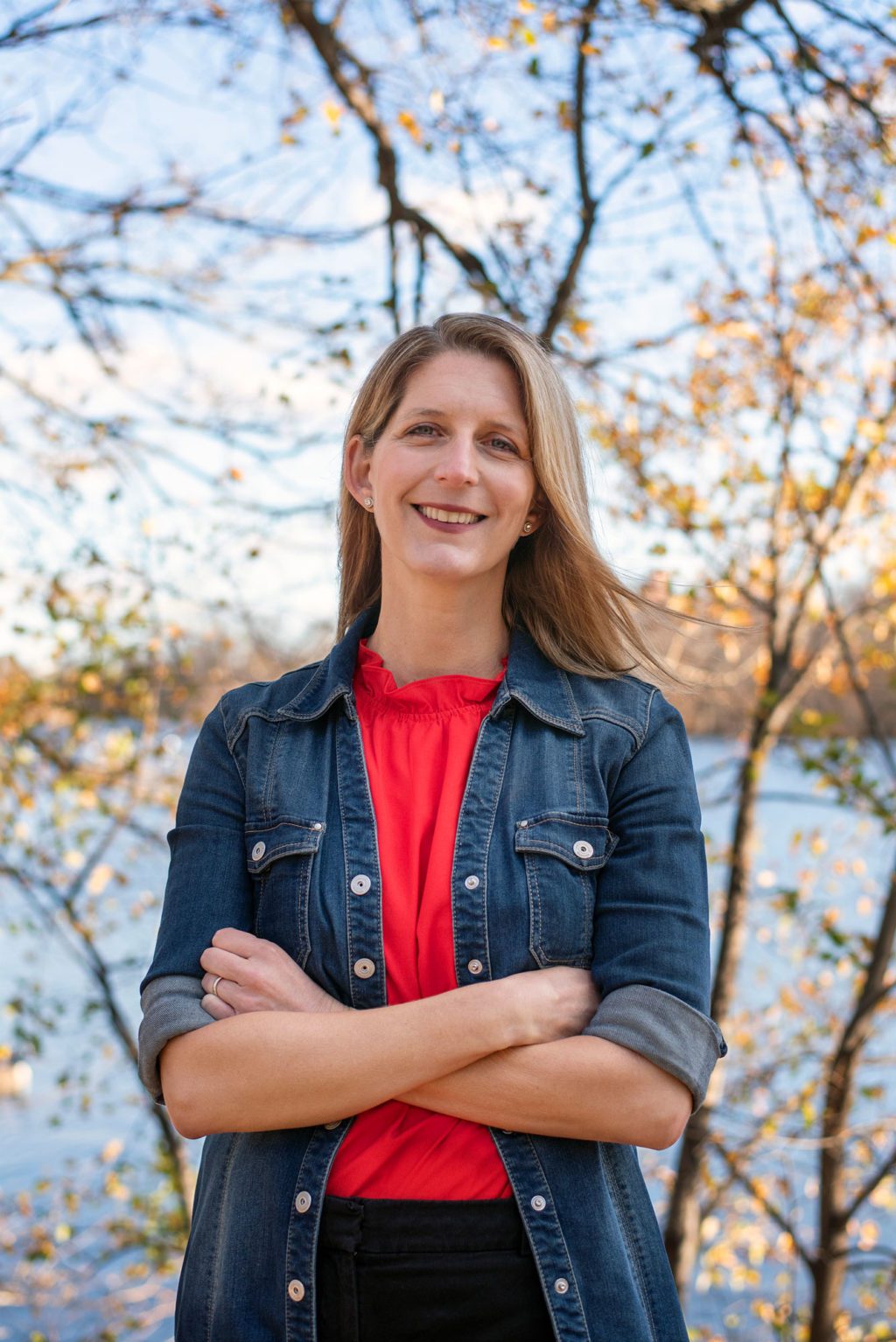
What effect has the pandemic had on USRowing?
It has been brutal. I lived it at Row New York. It was unlike anything I’ve ever experienced. I think many people went through that, but leading an organisation through Covid is terrible, because you’re just making these impossible decisions in the midst of a global pandemic. And New York City was obviously devastated by Covid. I wasn’t at USRowing until November, so I wasn’t there for the worst of it. But to answer your question, there were a lot of layoffs, major budget cuts. Needless to say, the national team didn’t go to Tokyo, there was no Olympics. That’s incredibly difficult for them and for the coaches. The rowing community at large is just adrift wondering, what can we do? When can we get on the water?
For so many people rowing is that thing that keeps you sane and centred and gives you community. And suddenly that was taken away overnight. So, it’s dizzying. And I didn’t live it through USRowing, but I’m sure it was horrific. And now we’re in this place where we’re building back up. We are building the 2021 budget, our fiscal year and calendar year. It’s less challenging building budgets now I think than it was last spring, because we had no idea when we would be active again, but knock on wood, it seems like, you know, I don’t want to sound like Trump, but like we’re rounding the turn. With all the good news with the vaccines it feels like maybe there is an end in sight for this. But we’re still in it. It’s still very difficult to plan because if you’re planning a $10 million budget, and you just don’t know if these regattas will take place, those are enormous question marks. It’s like laugh or cry. So, I laugh a lot.
What do you think are the biggest challenges USRowing faces?
There is a lot. I think there are huge opportunities too, but you asked about challenges. So, I would say the biggest, with or without Covid, is financial. The whole financial model needs to be revamped, in my opinion. As I was alluding to earlier, there just isn’t enough money coming in for what we need to do. And I need to build a team of people who can help with that, who can drive revenue, who can fundraise. Otherwise, we’re always going to be in this position of sort of gasping for air. And that’s a terrible position for any organisation to be in. I think we have reputational work to do. I don’t think that’s anyone’s fault. I think it’s probably a result of having been gasping for air for so long and stuck in this sort of reactive mode for so long. I think I would be a bad leader if I pretended that didn’t exist, or I didn’t know about it. There are opportunities for us to be better communicators, to celebrate the sport, to celebrate the diversity of the sport, to engage people more, to listen more. And I think we have the challenge of building trust again too which is tied to reputation, but specifically with people of colour in rowing in this country. How do we become diverse and inclusive? How do we walk the walk instead of just saying we care about it? So, lots and lots of challenges, but those are the big ones. One other big challenge, but absolutely doable, is the infrastructure. We have to get the house in order. Getting some new financial software and working on our database and our metrics. People don’t think that’s exciting. But it is the foundation. It is key.
Where do you hope to make the biggest changes?
First, I need to learn from our stakeholders what they want. It is their organisation, right? We belong to the rowers in this country, so first we need to understand what they want and need. And then I have to see where that aligns with what I think we can do and prioritise those things. So, if it’s coaching education, if it’s more safety, if it’s diversity in boathouses, those are the changes we focus on. If left to my own devices, I think the thing we need to do is bring real value to our members; member organisations and individual members, and recognise that value is different for different people. A 30-year-old rower will have different needs to a 60-year-old, or a para rower, or a mom of a rower – it is not one size fits all. So, what I have been looking at for the last three weeks is how do we become this vibrant resource for all our stakeholders? And then how do we become everything we need to be for the national team and its athletes? We’re not there yet. Compared to other countries, we are gasping for air. I would really like to work on making that change. But right now, I think my job is to listen and to learn. At a certain point I have to stop just doing that and say, “Okay, this is what I’ve heard, and this is what we’re going to do”. But for now, I really need to hear from the members and not assume that I know what is best for them.
How do you see rowing in the US becoming more diverse and inclusive?
We are such a diverse country and yet we’re still so segregated. We just are. But I think there is a lot of appetite for change. Especially after what has happened in this country with Black Lives Matter, Trump etc I think a lot of people sort of woke up within the rowing world here after this summer and realised, wow, we’re really part of the problem if we’re not working on this. So that’s a good start, people have been activated. I don’t want to say we did that, but I think for sure USRowing can be helpful as a guide and a resource.
Everyone is asking the same sort of questions, like how do we find kids from different backgrounds? How do we keep them? What do our coaches need to do differently? We should be there to help answer those questions. I also think we need to talk to people running clubs, and junior programs, and college coaches, and ask the difficult questions like, “Why are all of your clubs and your boats filled with white kids?” Let’s call it what it is, right? Why is your program all white affluent kids? And they may say, well, we want to change that, so we are all agreed. But nothing is going to change just because you want it to. And it’s not just going to change because you post something on your website saying, “We believe in diversity and equity and inclusion”, you have to do the work. So to answer your question, USRowing can be helpful in telling organisations, “Okay, you want to make your club more diverse, we’re going to tell you the things that you need to do; this is how you’re going to recruit, this is who you’re going to hire, this is how you’re going to talk to your kids so that they are all inclusive within the boat houses themselves”. Really get into the weeds. Then we need to inspire and motivate clubs around the country to do the work. We can help award the clubs that are making progress, so we aren’t just basing club performance on things like how they did at youth nationals, but instead looking at how they have become more inclusive and diverse as measures of success. You also can’t be what you can’t see, so if we’re saying we want everyone to feel welcome in the sport of rowing, we need to show that representation in everything we put out, in the videos and photos and articles that we post.
“I have heard positive things from the IOC and the Japanese are pretty buttoned up and optimistic. I think I would put some money on the Games going ahead.”
Amanda Kraus
Why has USRowing struggled to draw bigger sponsors or funding?
I don’t know if it’s the case that USRowing hasn’t done a good job of it, or if it’s just a very difficult thing to do a good job of. The verdict is still out. In my mind, as an outsider, I always thought USRowing would be a no-brainer for corporate sponsors. Especially for the women’s team, you know, they’re winning left and right in the eight and these beautiful women are doctors and lawyers, and they represent everything that this country loves around the values of hard work and teamwork and grit. How are we not monetizing that? Aren’t there a million brands that want to be associated with that? It’s too soon for me to say why it hasn’t happened but ask me again in a year and I’ll either be like, yeah, it’s going great now, and we have people falling over themselves who want to be associated with us. Or I’ll be like, yeah, I get it now. But I am optimistic. Who wouldn’t want to be connected with this brand, especially in this country? There’s something there and I’m eager to work on it.
What do you see as rowing’s strengths, and where can it be better?
I think what’s good about rowing, and I’m preaching to the choir here, is that it’s not a sport you need to have done since you were six or seven. It speaks to so many people for whom they’ve tried ball sports, you know, or sports that need coordination – not to say that there aren’t people who become rowers who are phenomenal basketball players etc., but one does not need to have that kind of coordination to be extremely successful in rowing. I think the fact that there are no superstars, except in the singles, and it really is the ultimate team sport. Name another sport, where you have to do it together, and being really good all by yourself is not acceptable. You have to be really good all together. I think that that makes rowing unique and really special for people. And it’s something that people can do from middle school all the way into their 80s and just continue to enjoy it. I also love that boathouses are these places where people of all different ages come together. In terms of community that’s pretty special. You don’t see that at a gym for a basketball team or on a soccer field. It’s an actual house and that’s really special in my mind. In terms of where it can be better, I think we need to think about how we keep rowing relevant. And how we engage spectators more. The more people see themselves as rowers and potential rowers, the better. People think of a rower and they think of a tall, fit, white person. And that’s great. They can still exist, too. But how do we welcome other people into the sport? Not only not exclude them, but welcome them and celebrate them, so that rowers can look like lots of different things. And I think those are the big things, to make the sport more accessible.
When do you foresee rowing events going back to normal in America?
That will happen on May 15th. I’m kidding! I don’t know. People ask that question all the time and I think we should start a betting pool or something. But it’s looking like the vaccines are going to be here, maybe in the next few weeks, but that is going to initially go to first responders and elderly people. So, then they’re saying most people here will get it in the spring. I don’t have any information other than that, you know, I just read the New York Times and listen to NPR. But if I were a betting woman, I would say we’ll be back on the water July. I want it to be June, but I think it’s more likely July. June is optimistic. And I think we’ll be back to some semblance of normal by September. That would be my bet.
How confident are you that Tokyo will go ahead?
I have heard positive things from the IOC and the Japanese are pretty buttoned up and optimistic. I think I would put some money on the Games going ahead. It could end up looking different in terms of spectators and everything else, but I don’t see them not running it at all. It’s a lot to organise and think about – just travelling, getting to trials, quarantining etc. It’s dizzying how much there is to think about, not just for us, but all teams and FISA, but I would put money on Tokyo happening.
Do you still get to row?
Yes, I do. I have a women’s eight I row with at the Head Of The Charles. I am more of a runner now, just because I have two kids and it’s easy to put on my sneakers and go run around the park. But every August or September, I would train with a sort of Rolodex of masters women or club women, and we would race the Charles. I also have an erg that mostly my husband uses. I’ll jump in a single in the summer a little, but it’s not that easy in New York City either.
Is there any one thing that you most want to achieve while CEO of USRowing?
Really there are three things, maybe even four if I am being greedy. Firstly, I would feel good being able to walk away from this job in however many years in the knowledge that we have a financial model that works, so that we’re not existing on fumes anymore. For the second thing, I would be happy walking away with the sport looking very different. What I mean is that the boats you see when you go to a race better represent the diversity in this country. Thirdly, I would like to make it so that when people talk about USRowing, they say things like, “Oh, you know, what was great about USRowing?” or “You know what they did for me?” instead of saying “USRowing? What do they even do?” Because that’s the sentiment right now. And lastly, because I’m being greedy, I want to help bring support to our national team coaches and athletes so they can be the best in the world. Those resources aren’t going to come overnight, but I think the path there is achievable and I’m looking forward to it.
This article first published in
